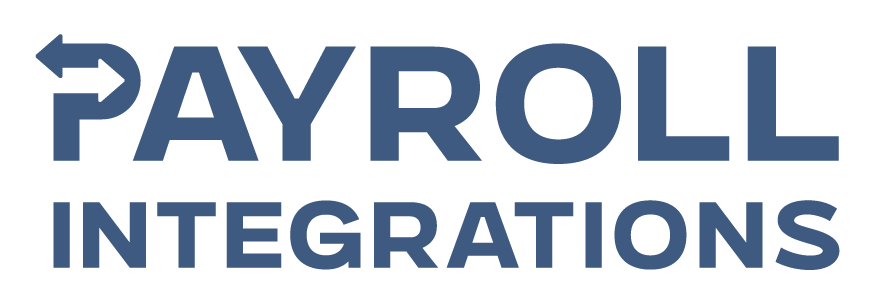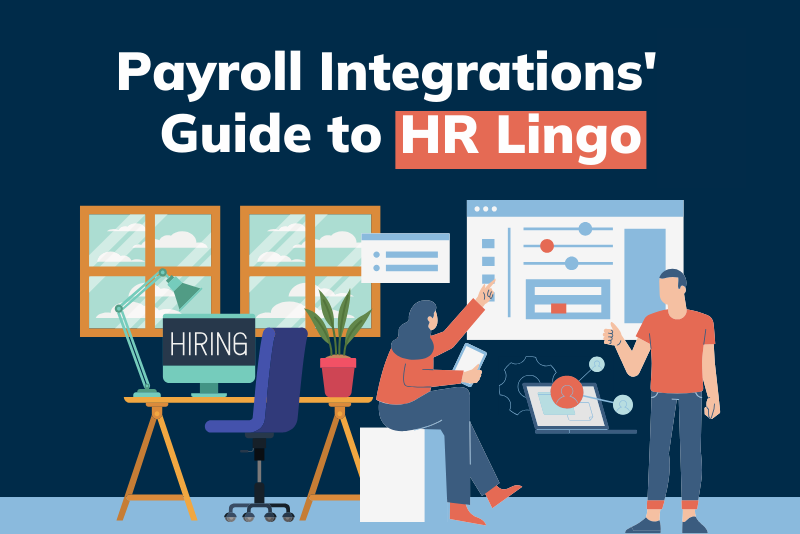Human Resources (HR) professionals are the oft unsung heroes tasked with navigating the delicate balance between enforcing company policies and fostering a positive workplace culture.
From hiring to offboarding, HR departments and their teams are responsible for managing the employee life cycle and ensuring the day-to-day operations of work life runs smoothly.
Maintaining an efficient and effective workplace requires clear communication both within HR and between HR and other departments, which is why even non-HR professionals should have a firm grasp on common HR terminology.
Section 1: Basic HR Terminology
The Employee Life Cycle (ELC) represents the stages an employee goes through during their time with a company, from initial recruitment to departure. It includes recruitment, which is the process of drawing in, choosing, and employing qualified applicants for open positions.
Then, there is onboarding, which acquaints new hires with the corporate policies, corporate culture, and specific job duties.
Development involves providing staff opportunities for training and ongoing professional growth. Retention focuses on various tactics and strategies used to retain important personnel at the company.
Lastly, there is offboarding, the process of handling an employee's departure from the organization, managing paperwork, and conducting exit interviews.
Other common, basic HR terms and acronyms include:
- A Human Resources Information System (HRIS) is a software solution used to manage various HR functions, including employee data, payroll, recruitment, and performance management.
- Full-time Equivalent (FTE) is a unit that indicates the workload of an employed person, making workloads comparable across different contexts.
- Paid Time Off (PTO) is a policy that allows employees to take paid leave for vacations, personal days, or sick time.
- Key Performance Indicators (KPIs) are metrics used to evaluate the success of an organization, employee, or project in meeting performance objectives.
- The Equal Employment Opportunity Commission (EEOC) is a federal agency that enforces laws against workplace discrimination.
- An Employee Assistance Program (EAP) provides employees with confidential support for personal issues that may affect their work performance or overall well-being.
Section 2: Recruitment and Hiring

There are several key concepts in recruitment and hiring, all of which require understanding various important terms.
A job description, for example, outlines the duties, responsibilities, and scope of a job. That’s obvious enough, but what is important to note is that a description is technically distinct from a job specification list, which defines the skills, experience, and qualifications needed to perform the job, often in bulleted format.
Sourcing involves identifying potential candidates, whereas recruiting encompasses the entire process of attracting, interviewing, and hiring candidates. Many companies use an Applicant Tracking System (ATS), a software application that automates the recruitment process by managing job postings, applications, and candidate information.
Addition terms can include:
- A candidacy pipeline refers to the system or process used to track and manage potential candidates through various recruitment stages.
- A background check involves verifying an applicant’s employment history, education, criminal record, and other relevant information.
- An offer letter is a formal document provided to a candidate, detailing the terms and conditions of employment.
- Cultural fit pertains to the alignment between an employee’s values, beliefs, and behavior with the core values and culture of the organization.
Section 3: Employee Benefits and Compensation

Knowing standard HR compensation terms is a priority for clear communication in any organization. These include concepts everyone is familiar with such as a salary, a fixed regular payment typically expressed as an annual sum.
Conversely, a wage is a payment based on hours worked or units produced. Exempt employees are not entitled to overtime pay, whereas non-exempt employees are entitled to overtime pay according to the Fair Labor Standards Act (FLSA). Total rewards refer to the combination of employee benefits, compensation, and other incentives.
A strong grasp of benefits terms is vital for both employers and employees because it increases employee retention and overall job satisfaction.
Health insurance is a benefit that covers medical expenses for employees and their dependents. A Flexible Spending Account (FSA) is a pre-tax benefit account used to pay for eligible medical, dental, and vision care expenses. A Health Savings Account (HSA) is a savings account used in conjunction with a high-deductible health plan, allowing employees to save pre-tax money for medical expenses.
Lastly, the COBRA Consolidated Omnibus Budget Reconciliation Act is a federal law that enables employees to continue their health insurance coverage after leaving employment.
A 401(k) is a retirement savings plan that allows employees to save and invest a portion of their paycheck before taxes are taken out. The Traditional and Roth 401(k)s are the most commonly used.
Section 4: Performance Management

Understanding performance management terms is crucial for effective employee evaluation and development.
Performance appraisal is a systematic evaluation of an employee’s performance against pre-established criteria and objectives.
360-Degree Feedback is a process where employees receive confidential and anonymous feedback from peers, managers, and direct reports.
SMART goals, which stands for Specific, Measurable, Achievable, Relevant, and Time-Bound, provide a framework for setting clear and attainable objectives.
Being aware of key terms in employee development and retention is also essential for organizational success. A Performance Improvement Plan (PIP) is a structured plan designed to help employees improve their performance and meet the company’s expectations.
Succession planning involves identifying and developing internal employees to fill key leadership positions within the organization.
Talent management is a strategy aimed at attracting, developing, retaining, and utilizing people with the necessary skills and aptitude to meet current and future business needs.
Employee engagement refers to the emotional commitment employees have towards their organization and its goals, driving productivity and loyalty.
Section 5: Legal and Compliance

Knowledge of key legislation is crucial for ensuring compliance and fair treatment in the workplace.
The Fair Labor Standards Act (FLSA) is a federal law that sets standards for minimum wage, overtime pay, recordkeeping, and child labor protections.
The Family and Medical Leave Act (FMLA) provides eligible employees with unpaid, job-protected leave for qualifying family and medical reasons.
The Americans with Disabilities Act (ADA) prohibits discrimination against individuals with disabilities in all aspects of public life, including employment, ensuring equal opportunities and accessibility.
Understanding compliance terms is essential for fostering a fair and safe workplace environment. Affirmative action refers to policies that support members of historically disadvantaged groups who have faced discrimination in the past.
Anti-discrimination policies are designed to prevent unfair treatment based on characteristics such as race, gender, age, religion, and other protected statuses.
Workplace safety regulations enforced by the Occupational Safety and Health Administration (OSHA) ensure that employers provide safe and healthy working conditions for their employees.
Together, these measures promote inclusivity, fairness, and employee well-being in organizations.
Section 6: Employee Relations

Understanding key concepts in employee relations helps to maintain a harmonious workplace environment. Grievance procedures provide formal processes for employees to raise concerns or complaints about their work environment or treatment, ensuring their voices are heard and addressed.
Conflict resolution encompasses various strategies and processes aimed at resolving disputes and tensions that may arise among employees or between employees and management.
Mediation involves a neutral third party assisting in resolving conflicts through facilitated discussion and agreement, whereas arbitration involves a neutral third party making a binding decision after hearing both sides of the dispute. These processes contribute to fostering positive employee relations, promoting collaboration, and ensuring fairness in resolving workplace issues.
Recognizing important terminology in labor relations is equally essential for navigating workplace dynamics.
Collective bargaining involves negotiations between employers and groups of employees to establish agreements regulating working conditions and terms of employment.
Labor unions are organizations formed by workers to protect and advocate for their rights and interests in the workplace.
A whistleblower is an employee who reports unethical or illegal activities occurring within their organization, often in the interest of transparency and accountability.
Retaliation refers to adverse actions taken against an employee in response to their participation in legally protected activities, such as filing a complaint or reporting misconduct, highlighting the importance of safeguarding employee rights and promoting a fair work environment. Retaliation is illegal and can be grounds for actions taken by courts against an organization.
Section 7: Learning and Development

Developing ongoing enhancement of skills at work requires an understanding of training concepts. These include On-the-Job Training (OJT)–providing employees with training while they perform their regular job duties–allowing for practical learning and immediate application of new skills.
Continuous Professional Development (CPD) refers to ongoing training and education initiatives aimed at enhancing employees' skills, knowledge, and expertise over time.
E-learning, conducted via electronic media such as the Internet, offers flexible and accessible learning opportunities that can be tailored to individual learning preferences and schedules. An example of this can be having a virtual meeting via Zoom to host discussions or meetings. Together, these training methods support employee growth and proficiency, ensuring they remain competitive and adaptable in their roles
Understanding career development and leadership enhancement strategies is also key to fostering employee growth and organizational success.
Career pathing involves mapping out an employee’s potential career progression within an organization, providing clarity and direction for professional advancement.
Leadership development encompasses programs and activities designed to cultivate leadership skills and competencies among employees, preparing them for future managerial roles and responsibilities.
Mentorship fosters a supportive relationship where experienced individuals guide less experienced colleagues, offering insights and advice to aid in their professional development.
Coaching involves one-on-one support aimed at enhancing an individual’s skills, knowledge, and performance through personalized guidance and feedback.
Together, these initiatives contribute to a well-rounded approach to talent development, ensuring employees are empowered to reach their full potential and contribute effectively to organizational goals.
Section 8: HR Technology

HR tech tools are essential for efficient management of human resources functions. A Learning Management System (LMS) is software used to deliver, track, and oversee training and education programs within organizations.
Payroll systems automate tasks such as employee payroll processing, tax filing, and benefits administration, ensuring accuracy and compliance.
An Employee Self-Service Portal is a web-based platform that enables employees to independently access and manage their personal information, benefits, and other HR-related tasks, promoting convenience and transparency in employee interactions with HR processes.
These tools streamline operations, enhance employee experience, and support organizational efficiency in managing HR tasks.
Emerging trends in HR are shaping the workplace of the future. AI in HR involves using artificial intelligence to automate tasks like recruitment, performance reviews, and employee interaction, making processes more efficient and insightful.
People analytics uses data analysis to understand and boost workforce performance, providing valuable insights into employee productivity and engagement.
Remote work tools, such as communication platforms, collaboration tools, and project management software, support flexible work arrangements by enabling seamless communication and task management from anywhere.
Why Keeping Up With the Latest HR Concepts Is Essential For Today's Employees
Many of these terms and concepts are relatively new, referring to trends that are revolutionizing how organizations operate and adapt to the evolving needs of the modern workforce; understanding both what they are and when to best leverage these concepts is key to creating a modern workplace.
To effectively interact both inside and outside of the HR department, one must be familiar with HR terminology in a way that is continually updated.
When HR professionals are aware of the latest trends and concepts, both employees and HR professionals can perform their jobs more successfully and comprehend HR procedures and rules, avoiding common (or new) pitfalls so as to better ensure employee satisfaction at a time when rising numbers continue to regularly consider resignation.
In other words: smart HR practices are not a nice-to-have, but essential to surviving with a happy, well-trained workforce in 2024 and beyond.



